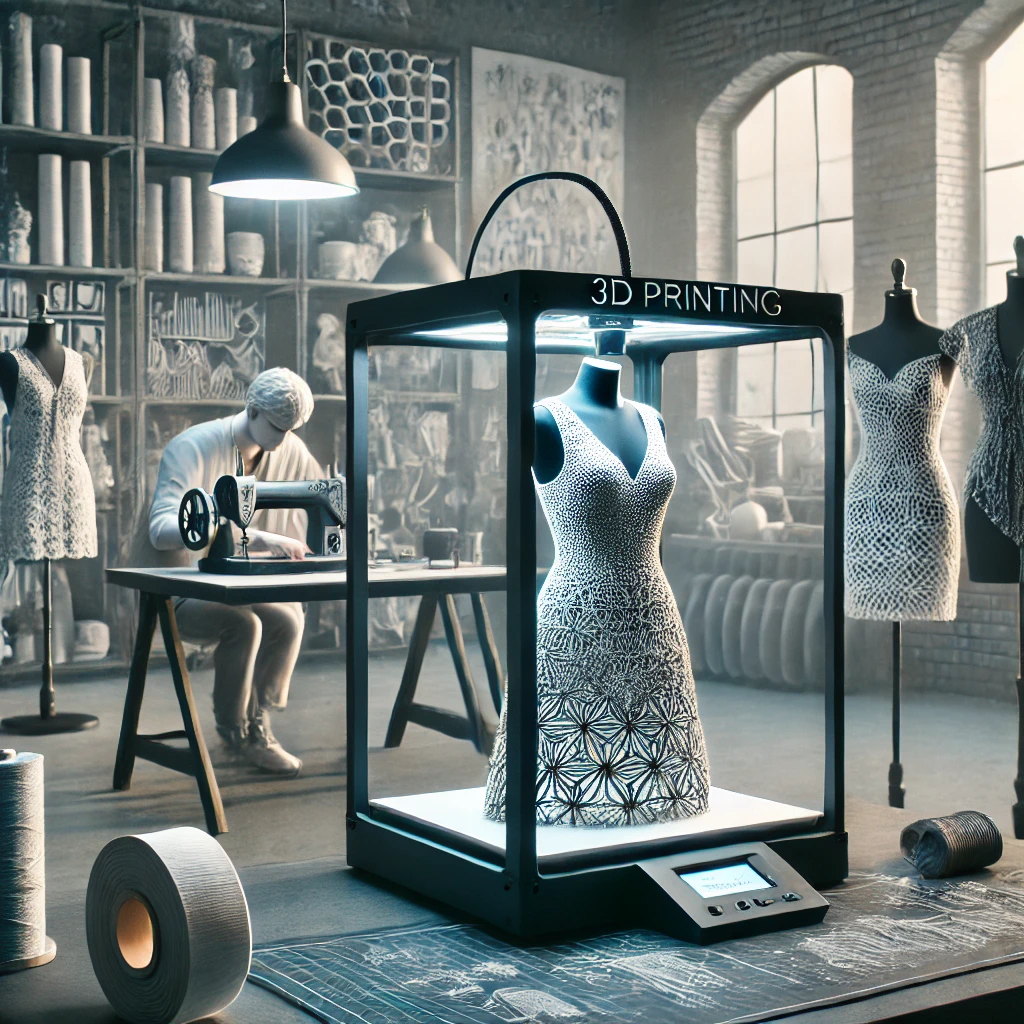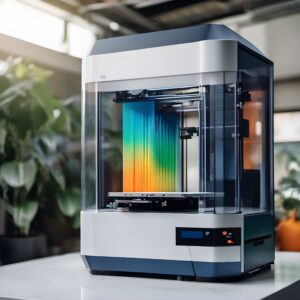3D Printing in Fashion: The Intersection of Technology and Style

The fashion industry is no stranger to innovation, consistently evolving with the times and adopting new technologies to stay ahead of the curve. One of themost revolutionary technologies to emerge in recent years is 3D printing, a process that allows designers to create intricate, customizable pieces that push the boundaries of traditional fashion. As 3D printing becomes more accessible and advanced, it is increasingly being used to produce everything from haute couture garments to everyday accessories, fundamentally changing the way fashion is conceived, produced, and consumed. In this article, we explore how 3D printing is transforming the fashion industry, the benefits it offers, and what the future holds for this exciting intersection of technology and style.
The Emergence of 3D Printing in Fashion
3D printing, also known as additive manufacturing, involves creating three-dimensional objects by adding material layer by layer based on a digital design. While the technology has been around for decades, its application in fashion is relatively recent. Designers and fashion houses began experimenting with 3D printing in the early 2010s, using it to create avant-garde pieces that were previously impossible to produce using traditional methods.
Pioneering designers like Iris van Herpen and Danit Peleg have garnered attention for their innovative use of 3D printing, showcasing garments that resemble wearable art. Van Herpen’s 3D-printed dresses, which debuted on Paris runways, and Peleg’s fully 3D-printed collection have demonstrated the potential of this technology to create garments with complex structures and intricate details that push the boundaries of fashion design.
Benefits of 3D Printing in Fashion
1. Customization and Personalization: One of the most significant advantages of 3D printing in fashion is the ability to create highly customized and personalized garments and accessories. Designers can tailor products to fit an individual’s exact measurements, ensuring a perfect fit. This level of customization extends beyond just size; consumers can also choose materials, colors, and patterns, making each piece truly unique.
2. Sustainability: The fashion industry has long been criticized for its environmental impact, particularly due to wasteful production processes and the use of unsustainable materials. 3D printing offers a more sustainable alternative by reducing waste—garments are created with precise amounts of material, minimizing offcuts. Additionally, 3D printing enables the use of eco-friendly materials, such as biodegradable or recycled filaments, further reducing the environmental footprint of fashion production.
3. Design Freedom: Traditional garment construction methods can limit a designer’s creativity due to the constraints of fabrics and sewing techniques. 3D printing removes these limitations, allowing designers to create complex, organic shapes and structures that would be impossible to achieve otherwise. This opens up new possibilities for innovation and experimentation in fashion design.
4. On-Demand Production: With 3D printing, fashion products can be produced on demand, eliminating the need for large inventories and reducing the risk of overproduction. This shift towards made-to-order manufacturing not only cuts down on waste but also allows for quicker response times to fashion trends, enabling designers to bring new products to market faster.
5. Accessibility and Democratization: As 3D printing technology becomes more affordable and widespread, it has the potential to democratize fashion design. Independent designers and even consumers can create and print their own clothing and accessories at home, reducing the reliance on mass-produced goods and empowering individuals to express their personal style.
Current Applications of 3D Printing in Fashion
3D printing is already being used in various ways within the fashion industry, from high-end couture to everyday accessories:
Haute Couture: Designers like Iris van Herpen have used 3D printing to create stunning couture pieces that are as much about art as they are about fashion. These garments often feature intricate patterns and structures that are difficult or impossible to achieve with traditional sewing techniques.
Major brands like Adidas and Nike have adopted 3D printing to produce customized footwear, such as the Adidas Futurecraft 4D, which features a 3D-printed midsole designed for optimal performance and comfort. The use of 3D printing in footwear allows for precise customization, catering to individual foot shapes and needs.
Jewelry and Accessories: 3D printing has made significant inroads in the creation of jewelry and fashion accessories. Designers can produce intricate, lightweight pieces that would be challenging to create using conventional methods. Additionally, 3D printing allows for greater experimentation with materials, enabling the use of unconventional substances such as resins, metals, and even bioplastics.
Prototyping and Sampling: 3D printing is also used in the fashion industry for prototyping and sampling. Designers can quickly create prototypes of their designs to test fit, form, and functionality before moving to full-scale production. This reduces the time and cost associated with traditional sampling methods.
The Future of 3D Printing in Fashion
As 3D printing technology continues to advance, its impact on the fashion industry is expected to grow. Here are some potential future developments:
Mass Customization: The ability to mass-produce customized garments could become a reality as 3D printing technology becomes more efficient and scalable. Consumers may soon be able to order clothing tailored to their exact specifications, from fit to fabric, with quick turnaround times.
Innovative Materials: Research into new materials for 3D printing is ongoing, with the potential to revolutionize fashion even further. Bio-based and smart materials that change properties in response to environmental factors could lead to the development of clothing that adapts to the wearer’s needs or the surrounding conditions.
Circular Fashion: 3D printing could play a key role in the circular fashion movement, where garments are designed to be easily recycled or repurposed. Designers could create clothing that can be disassembled and reprinted into new items, reducing waste and promoting a more sustainable fashion industry.
Integration with Other Technologies: The future of 3D printing in fashion may also involve the integration with other cutting-edge technologies, such as AI and wearable tech. For example, 3D-printed garments could incorporate sensors or LED lights, creating clothing that not only looks good but also interacts with the wearer and their environment.
3D printing is transforming the fashion industry by offering new ways to design, produce, and consume clothing and accessories. From haute couture to everyday wear, this technology is pushing the boundaries of what is possible in fashion, enabling greater creativity, customization, and sustainability. As 3D printing continues to evolve, its influence on the fashion industry is likely to expand, paving the way for a future where technology and style are seamlessly intertwined. Whether it’s through the creation of avant-garde designs or the democratization of fashion production, 3D printing is set to play a central role in shaping the future of fashion. ML ML



